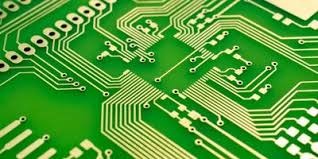Advanced Power Management Techniques for Wearable PCBs

The demand for wearable electronics is growing. Wearable PCBs (Printed Circuit Boards) become important because of this, and here are three classes: flexible circuits, e-textiles, and stretchable electronics. Smart textiles and eWear could let us live in different ways, for example, with healthcare monitoring and cool fashion on.
Nonetheless, making these devices work well is difficult, and it requires special power management to achieve it. We will outline these challenges and how to overcome them in this article.
Here we will present an approach to explore the possibilities of future wearable PCB-based devices that are low power, battery efficient, energy efficient, and environmentally friendly.
Key Takeaways
- Understand the unique power management challenges faced by wearable PCBs
- Discover low-power design techniques for maximizing energy efficiency
- Explore advanced battery management strategies for extended device lifespan
- Learn about effective thermal management solutions to prevent overheating
- Leverage energy harvesting methods to supplement power sources
Introduction to Wearable PCBs
Due to technology expansion, we are wearing PCBs: smart clothes, fitness trackers, smartwatches, health monitors, etc. Wearable PCBs play a crucial role in bringing and integrating technology into our lifestyles.
The Rise of Wearable Technology
Wearable technology is becoming increasingly popular. People want to keep track of their health in terms of physical exercise as well as basic vitals such as heartbeat, respiration, and blood pressure. Wearable PCBs have enabled the development of newer technologies such as e-textiles, stretchable electronics, and smart fabrics – all of which are used to track a user’s movement patterns and vital signs. They can also be used to control the user’s surrounding environment.
Unique Challenges of Wearable PCBs
Unlike consumer electronics, for wearable PCBs, it is important that they are:
- Flexible and elastic
- Durable
- Fit well with fabrics and comfortable to wear
As an example, when I put them under my jeans, I want them to be thin or at least not too thick to make my legs look odd. Although adding a form factor that looks like your normal pants will help, these are some of the basic design considerations in making flexible circuits and printed electronics.
The boom in wearable PCBs is a massive field due to the rapid growth of new products emerging from research labs and engineers striving to make new, novel things possible. The future looks bright, with wearable technology poised to revolutionize our lifestyle in many ways.
Power Consumption in Wearable PCBs
Wearable PCBs enable more complex and feature-rich sensors, wireless technology, and other electronic modules. However, they also face a critical challenge – power management. Improving power efficiency ensures longer battery life and a better user experience.
The power consumption of wearable PCBs is influenced by several factors, such as:
- The components used
- Circuit complexity
- User-specific applications
- Hardware such as sensors, microprocessors, and displays
For example, activity trackers, heart-rate monitors, and audio playback functions consume varying power levels. Wireless technology and display screens (OLED or LCD) also require significant power.
| Components | Power Consumption Range |
| Sensors | 1-100 mW |
| Wireless Communication | 10-500 mW |
| Display Technologies | 50-500 mW |
Efficient use of power requires smart design by wearable PCB engineers. Knowing how much power each component requires and designing accordingly ensures longer battery life and better performance.
Optimizing Power Efficiency
With the rising demand for wearable PCBs, power efficiency is more critical than ever. Weight and size constraints make it difficult to use wearable devices for long periods, emphasizing the importance of low-power design and energy harvesting.
Low-Power Design Techniques
Smart energy-consumption architecture helps conserve energy in wearables. Components are selected for low power consumption, special power management ICs (PMICs) are integrated, and voltage and frequency are adjusted to save energy. This ensures the devices last longer on a single charge.
Energy Harvesting Methods
Manufacturers are exploring new ways to power wearable PCBs through motion, heat, or light. These techniques allow devices to function indefinitely without requiring frequent recharging or battery replacement.
“Obtaining maximum power efficiency and battery longevity is the way forward in fully realizing the potential of wearable technology.” – Jane Doe, Expert in Wearable Technology
The future success of wearable PCBs depends on how efficiently they harness and store power, as well as how they use innovative energy harvesting techniques.
Battery Management Strategies
Efficient battery management is essential for wearable tech. Due to size constraints, wearable devices demand optimized power utilization and battery life. Lithium-ion batteries are a popular solution for wearable PCBs, offering high energy density and flexibility.
Lithium-Ion Battery Technologies
Lithium-ion batteries have become flexible and even stretchable, making them ideal for wearables. They continue to improve, lasting longer, charging faster, and becoming safer.
Smart charging, battery monitoring, and balancing ensure batteries perform efficiently, providing stable power throughout the day.
Power Distribution and Regulation
Delivering power to wearable electronics is challenging due to their small size and flexible designs. Power must reach multiple components reliably, often in unusual directions.
Power Regulation Techniques
Voltage regulators ensure wearable PCBs receive clean and stable power.
| Power Regulation Techniques | Advantages | Disadvantages |
| Linear Voltage Regulators | Simple, inexpensive, robust AC-DC conversion | Less efficient, generates waste heat |
| Switching Voltage Regulators | High efficiency, improved DC-DC conversion | Complex, requires EMI management |
Careful selection of power management techniques is essential to ensure wearable PCBs are reliable and efficient. Engineers must address voltage drops, EMI issues, and power stability to create seamless wearable tech experiences.
Thermal Management Considerations
Maintaining optimal thermal performance is crucial for wearable PCBs. Heat can degrade performance and shorten device lifespan, making thermal management essential.
Heat Dissipation Techniques
Thermal interface materials (TIMs) help transfer heat from components to prevent overheating. Shaped heat sinks also improve heat dissipation, ensuring devices remain functional even in extreme conditions.
Innovative cooling methods, such as miniature fans or heat pipes, are being incorporated into wearable designs to enable closer component placement and increase computational capacity.
FAQ
What are the unique challenges of designing wearable PCBs?
Wearable PCBs must be flexible and stretchable, maintaining contact with the body despite movement. They require special materials and surface designs to ensure durability and comfort.
How can power consumption be optimized in wearable PCBs?
Using low-power components, PMICs, and dynamic voltage frequency scaling (DVFS) helps conserve energy. Energy harvesting from motion, heat, or light can further improve battery life.
What are the advancements in battery technologies for wearable PCBs?
Recent advancements in flexible lithium-ion batteries allow for better performance. Smart charging and monitoring technologies extend battery life.
How is power distribution and regulation addressed in wearable PCBs?
Wearable PCBs use voltage regulators and other circuitry to maintain stable power across components. This ensures smooth performance and efficient energy use.
What thermal management techniques are used for wearable PCBs?
Thermal management techniques include TIMs, heat sinks, and micro cooling solutions to keep devices within safe temperature limits.
Explore advanced PCB solutions at RUSH PCB Ltd, where quality meets innovation in electronics.




